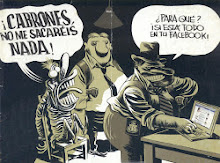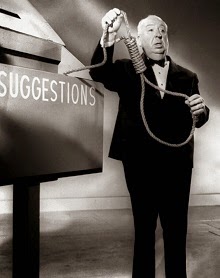Sam Jordison
In Knots and Crosses, the dour detective may seem an incomplete invention, but there’s already real clout to Ian Rankin’s inspector
Threat and danger ... Ken Stott as Inspector Rebus in the 2007 ITV adaptation of Knots and Crosses. Photograph: ITV/PR
When asked what he would change about Knots and Crosses, Ian Rankin said: “Everything.” His complaints (made to James Naughtie on BBC Radio 4) were mainly about the problems that aspects of the book caused him later on in the series. In this first Rebus book, we’re told that his father was a hypnotist – and so is his brother. His brother is also a drug dealer who ends up in prison. Oh, and Rebus is an ex-SAS man with a morbid fear of flying, instilled when he was dropped from a helicopter during a training exercise.
None of this would have been a problem if Rankin had followed his original plan and had Rebus killed in the final pages – but as we know, he lived on. And Rankin had to work in his backstory every time Rebus needed to catch a plane or think about his family.
Rankin has also expressed more literary concerns about his earlier books. He’s noted that Knots and Crosses was led more by plot than character. The need to keep things moving forward and following the right tracks, rather than the psychology of the people in the scene, would sometimes dictate the action. In a 2005 introduction to Knots and Crosses, the author says that “rereading the book now, I find myself blushing at the number of literary puns and references … Rebus himself is too well read, quoting from Shakespeare and passionate about Dostoevsky. He thinks like the student/novelist who created him, rather than a real cop. The sky is described as being ‘dark as Wagnerian opera’, while the phrase ‘ the manumission of dreams’ sent me (in 2005) to a dictionary. I’m guessing it was a word I’d only just learned in 1985, and I was keen to show it off. I was a young man in love with language, striving for a voice and sometimes overreaching.”
“Overreaching” sounds like a forgivable sin. But a few commenters on the Reading group have added worse criticisms. Someone going under the monicker MeAlanPartridge complained: “Knots and Crosses is the worst one! It should be called Cliche City.” Others - fans of the later books – advised us not to read it. But such judgments strike me as harsh. Even Rankin has been a little unfair to his early work. Sure there are a few purple passages, but most of the prose is taut, pacey and rhythmical:
But they worked for their money, worked hard at building up contacts, squeezing into nooks and crannies, stepping on toes. He watched Gill Templer. What would she know about John Rebus? And would she be willing to tell? They were still friends, after all, her and him. Still friends.
That’s a passage I just found after opening the book at random. I wouldn’t want to make any huge claims for it – but it’s not bad. It neatly gives you the feeling of being inside the head of the character (Jim Stevens, a journalist), plants some intrigue about his relationship with Gill Templer (who, in this first book, is Rebus’s love interest), and gives the impression that Jim has trouble to cause. On a word-by-word level, those choppy sentences and that repetition gives a good indication of Jim’s anxiety. This is someone who can write.
Someone, too, who is consciously developing a style. He may have joked about his use of words like “manumission” (it’s the act of freeing slaves, if you’re still wondering), but there’s another story that gives a fairer impression of his early creation.
“Right from the very beginning I knew I wanted to write palpably Scottish fiction,” he told Robert McCrum in 2001. “I took the first James Kelman novel, The Bus Conductor Hines, home to my dad. I thought, my dad will like this; it’s written in Scots. But my dad said: ‘I can’t read that.’ He was reading James Bond and John le Carré. That was part of what attracted me to crime – the idea of getting a wide audience. Everything I wanted to say about Scotland I could say in a crime novel.”
Knots and Crosses, then, would be a book that his dad might enjoy; a novel with a strong plot written in clear, easy prose – but no less smart for that.
And yes, maybe there is, as MeAlanPartridge pointed out, some cliche in the story. Once I’d finished reading, and started to consider the way Rebus’s troubled past had come back to haunt him, his struggle to save his family, the flashbacks from the army – it did all start to seem a little daft. But it’s a mark of Rankin’s early ability to get you turning the pages that I didn’t dwell on such problems while actually immersed in the book. I was too keen on finding out what was going to happen.
I was also busy taking in the surroundings. Because Rankin’s vision of Scotland – and Edinburgh in particular – is fascinating. Taken together, the early Rebus books now form a series of snapshots of the city’s relatively recent, but very different history. There are references to the heroin epidemic that would also fuel Trainspotting. Leith Walk is not yet gentrified, hasn’t quite forgotten its seagoing past. Yuppies are showing up from London, where property is booming, marvelling at the house prices, buying everything they can … OK, not everything’s changed. There’s also consistency in the lurking darkness.
To go back to Knots and Crosses specifically and that 2005 introduction, Rankin says he wanted to write a modern version of Jekyll and Hyde, with the respectable librarian Gordon Knott concealing the true identity of the insane and murderous Gordon Reed. He also notes that he was “intrigued” that Robert Louis Stevenson set his novel in London when it “remains a very Scottish novel, based as it is (at least partially) on the real-life Edinburgh character Deacon William Brodie, who was gentleman by day, criminal by night.” But it isn’t just this association that makes Edinburgh the right setting. Rankin adds an extra edge to his new Jekyll and Hyde story by also giving the city a dual personality. It is refined, stately, and elegant. It is also as cruel and sharp as the east wind. A “schizophrenic city” of rude young men with “chilled little faces”, of seedy bars “the tourist never sees”, of dark secret tunnels under public buildings, “of fur coats and no knickers”.
There’s a sense of threat and danger throughout this version of Edinburgh. It is an impressively nasty book. Not just because of its ugly crimes, but also thanks to a bleak sensibility. One that is only enhanced by the lead character: Rebus himself is one of the things that makes the city feel so unsafe. We don’t know how many crimes he has solved. We haven’t seen his contempt for corruption and his fundamental decency. There is instead a feeling that this occasionally violent and permanently gruff man may be the mad one. That he may have murder inside him.
In fact, I now realise that the passage I stumbled upon and highlighted above is not entirely representative of the rest of the book. It comes from a point of view separate from Rebus. Most of the novel is claustrophobically situated inside his mind – and it’s a lonely, uncomfortable place. His asperity, his broken marriage, his drinking, his cold flat, his falling asleep in chairs because he can’t quite drag his tired hide into bed … Perhaps you could argue that these too are the stuff of cop cliche. But they feel real here. He feels like a character with weight. Rankin may have wanted to change a few details - but he nails the essentials.


































0 comentaris:
Publica un comentari a l'entrada